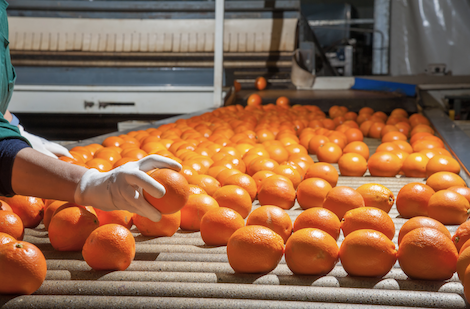2022 has already proven to be one of the most chaotic years yet for freight procurement and the refrigerated season was set to be the same way. However, while many believe that capacity access will once again be an issue, the reality is that there is currently a confluence of factors that may actually free up capacity in certain sectors. In fact, in the last 3 weeks, the reefer load-to-truck ratio has decreased from 12:1 to 8:1 year-over-year. And based on the USDA forecast the reefer supply chain will see improved balance in 2022, and that will impact rates in the spot market. With that in mind, below are several key forecast updates from the USDA that are likely set to drastically change the way that the reefer market looks in 2022.
Citrus Forecast
The most recent USDA Citrus April Forecast reduced all Florida grown oranges forecast by 3 million boxes – and comes on the heels of concerning news on bacteria spread among orange growers. At ~38 million boxes, this is a 28% decrease from 2021 and a whopping 43% decrease from 2020. To illustrate the gravity, this would be the lowest citrus production in over 50 years!
Pork Forecast
The most recent USDA 2022 Pork Production Forecast reduced pork production by 65 million pounds. Exports are now expected to fall somewhere around 6.73 billion pounds, that’s a 4.3% decrease year-over-year. Higher carcass weight and increased disease risk contributed to lower slaughter numbers.
Cattle & Beef Outlook
In contrast to the negative news coming out of pork and citrus, the most recent USDA Cattle & Beef outlook increased beef production by 195 million pounds to 27.570 billion pounds. January’s beef imports totaled 352 million pounds, up almost 57% year-over-year. The 2022 annual forecast for beef imports was increased by 50 million pounds from last month to 3.42 billion pounds. Therefore, reefer shippers should expect to see more capacity being drawn to high beef producing areas and away from citrus and other areas that are traditionally in high demand.
As transportation teams continue to dig out of a turbulent 2021, technology and actionable insights will shift from nice-to-have to mandatory. To uncover cost reduction opportunities, data-driven shippers have turned to advanced freight procurement analytics to optimize their carrier network. And to deliver goods on time, at fair market price, forward-thinking shippers have doubled down on AI-powered technology which continues to disrupt the decades-old linear process.

